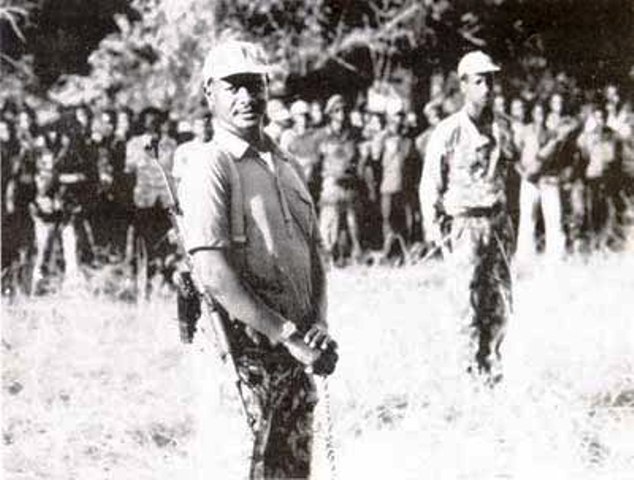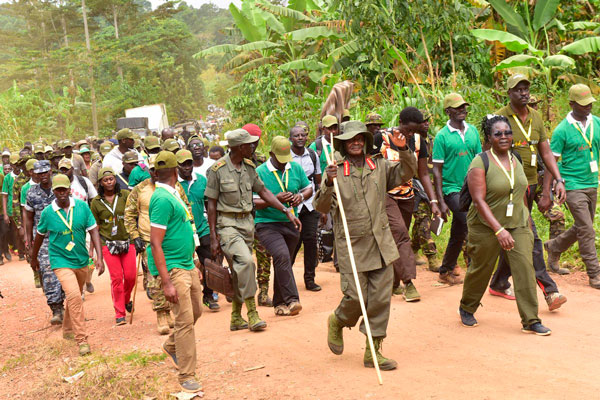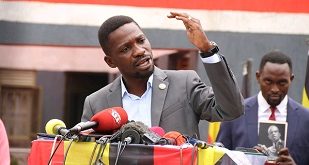
COMMENT | Yoweri Kaguta Museveni | An armed conflict has got four levels: a war; a campaign;an operation; and a battle. All these levels can either be short, like the 6 days war of 1967 between Israel and the Arabs or a protracted one such as the 30 years war between the Protestants and the Roman Catholics in Germany, the 100 years War between England and France, the 1st and 2nd World Wars between Germany and its allies and Britain, Russia, the USA and its allies.
In the case of Uganda, the second Resistance War started on the 6th of February, 1981 and major battles ended with the capture of Kampala on the 26th of January, 1986. Within that 5 years’ War, there were four campaigns, a number of operations and many battles.
A war means the whole conflict, from the beginning to the end ─ in this case from Kabaamba on the 6th of February to Kampala, the 26th of January, 1986.
The campaigns were four:
– The gun-raising campaign from the 6th of February, 1981, to September, 1985, when, in addition to the 4,000 rifles we had captured from the UNLA, we received the 5,000 rifles from Mwalimu with 1,000,000 rounds of ammunition and the 800 rifles we had received from Gaddaffi, with 800,000 rounds of ammunition.
– The second campaign was the campaign to open the second front in the Rwenzori Mountains, starting in March, 1985, until the battle of Rubona in June, 1985.
– The third campaign was the expansion that started in September, 1985, with the massive recruitment of fighters from Western Uganda that boosted the NRA from 4,000 fighters to 20,000 (fresh recruits and UNLA captured soldiers being integrated into the Resistance War).
All these 3 campaigns were within the strategic Defensive Phase ─ when the resistance was on the defensive, but fighting offensive battles and operations within the strategic defence.
– The 4th campaign coincided with the opening of the strategic counter-offensive on the 17th of January, 1986. Our forces, advancing on five axises (routes), swept towards Kampala in the centre and Masindi and Karuma in the West.

The axises were: Kampala-Masaka Road (1st Battalion ─ Pecos and Mugisha Fred, 5th Battalion ─ Kashaka and Kashillingi); Kinoni-Mpigi Road and Mityana Road axis ─ 7th Battalion ─ Kyaligonza and Stanley Muhangyi; Hoima Road axis ─ 11th Battalion ─ Chefe Ali; Bombo road-blocking ─ 13th Battalion ─ Ivan Koreta; the Western Axis ─ Hoima-Masindi ─ Tinyefuuza ─ Peter Kerim, with the 19th Battalion. The 3rd Battalion, under Lumumba, was in Reserve with me and Saleh, 21st Battalion was in Reserve at Kasese and the 9th Battalion was in Reserve at Kabale-Kigyezi. The 9th Battalion was under Julius Kihaanda and the 21st Battalion was under Benon Tumukunde in Kasese, watching the suspected moves of Mobutu in Congo. The 15th Battalion, under Samson Mande, was created.
I am referring to these forces as battalions, but, in reality, they were Regiments ─ equivalent to two of our present day battalions of 736 persons each. One of them, the 19th Battalion under Peter Kerim, was 1,900 fighters. The others were, on the average, 1,500 persons. We had done this deliberately so as to economize on the leadership resources (commanding officers) that were not so plentiful. If you have one good CO, why do you only put 5 companies, 146 persons each, under him? Why does he not provide leadership for 10 or more companies? This battalion will then, do work for 2/3 of a brigade (3 battalions), but under the leadership of the one good leader.
This trek, therefore, is on just a portion of one of the Operations ─ the Kabaamba Operation. This was within the campaign of gun-raising. The Operation started on the 22nd of December, 1985, from Sebuguzi ─ involving 1,500 fighters ─ armed and unarmed.
I, personally, oversaw this operation, with Saleh as the Operational Commander of the force. This was the Mobile Brigade comprised of: 1st, 3rd and 5th Battalions, with alot of commandos (unarmed fighters).
 The Independent Uganda: You get the Truth we Pay the Price
The Independent Uganda: You get the Truth we Pay the Price






Thank you for sharing these insights. Reading from His Excellency The President of Uganda, Dr. Y.K. Museveni giving his narratives is informative and characterizes peace building mechanisms in the Uganda of the 1980’s. My questions though are around the cycles, most especially the operations, the President lays out. I am not refuting them but I am afraid what the President leaves out prompted to ask more questions than answers. The president writes about massive recruitment from Western Uganda. But, doesn’t he need to say something about the role of the Central region that set the theater out of which the war rolled out to cover Uganda? After all this very trek has significant meaning to many in the regions he is trekking through. Where can the use of radio, literature and pamphlets come in? My own father was one of the people who distributed the pamphlets! Thirdly, where do other fighters other than the Resistance Forces come in? Fourthly, where do we place the citizens who gave up cows, goats and money to sponsor the war? How would the president put these contributory phases in the narrative of liberation war? Thanks and hope to hear from you.
I hope his young trekkers will be able to take the heat after 2021. The president is inciting rebellion after his 2021 general Election. My humble advice to those young trekkers is not to allow to be misled into illegal and treasonous activities because some of us will get involved to counter it. Okay!, try and we see.